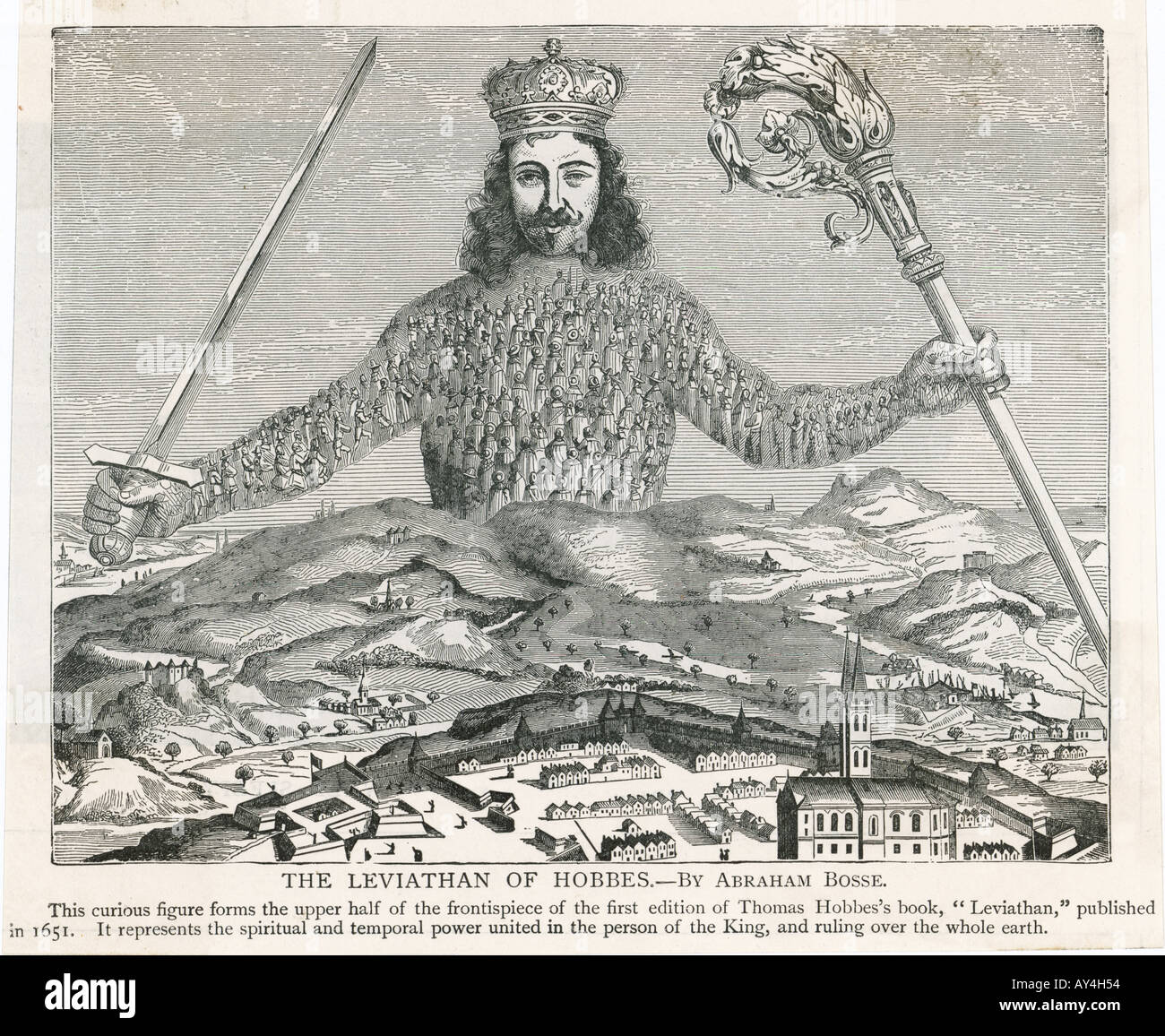


It well illustrates Hobbes’s theory that, “A multitude of men, are made one person, when they are by one man, or one person, represented so that it be done with the consent of every one of that multitude in particular” (Hobbes, Leviathan, I.16.13). One discovers, in this image, the notion of Sovereign Authority as an Artificial Person built up from the consent of the multitude of Natural Persons. In the grand center is the figure of the Sovereign King, whose body is both literally and figuratively constituted by the blurring-together individual bodies of the citizenry, the co- signers of the social contract, who face away from the viewer and towards the Sovereign. This iconic image offers multiple representations that provide the viewer with access to many of the core themes of the Leviathan: At the bottom are juxtaposed competing, or perhaps balancing, sources of Sovereign Authority-images of Ecclesiastical Authority (on the right) and Human/Temporal Authority (on the left). The famous frontispiece of Hobbes’s Leviathan was inspired by the anamorphic art form, which originated during the Renaissance and remained popular during Hobbes’s lifetime in the 17th century. Two Treatises Of Government This is a book by John Locke that was published in 1690 it emphasized that good government is a based on a social contract between the people and the rulers.Frontispiece of Thomas Hobbes’ Leviathan, by Abraham Bosse, with creative input from Thomas Hobbes, 1651 Spirit Of Laws This is the name of the 1748 book by Baron de Montesquieu in which he stresses a government's need to have a separation of power, support of the rule of law, and other Enlightenment-era ideals. Social Contract Theory This is an agreement between the governed and the government defining and limiting the rights and duties of each. Rule Of Law This is the legal notion that the power of government is limited and restrained by legal means and is not at the mercy and whims of individuals. Popular Sovereignty This is the belief that the ultimate power of the government rests on the will of the people themselves. Petition Of Right This is the 1628 English document that confirmed the right of Parliament to levy taxes, defined habeas corpus, and banned the billeting of troops. People took for themselves all that they could, and human life was solitary, poor, nasty, brutish and short. Natural Rights This is a political theory that individuals have privileges that no government can deny. According to Hobbes ( Leviathan, 1651), the state of nature was one in which there were no enforceable criteria of right and wrong. Montesquieu He was a French philosopher who developed a number of political theories in his Spirit of the Laws.

Mayflower Compact This was the first governing document of Plymouth Colony, signed by the Pilgrims in November of 1620. Magna Carta This was the Great Charter of English liberty granted (under considerable duress) by King John at Runnymede on June 15, 1215.


 0 kommentar(er)
0 kommentar(er)
